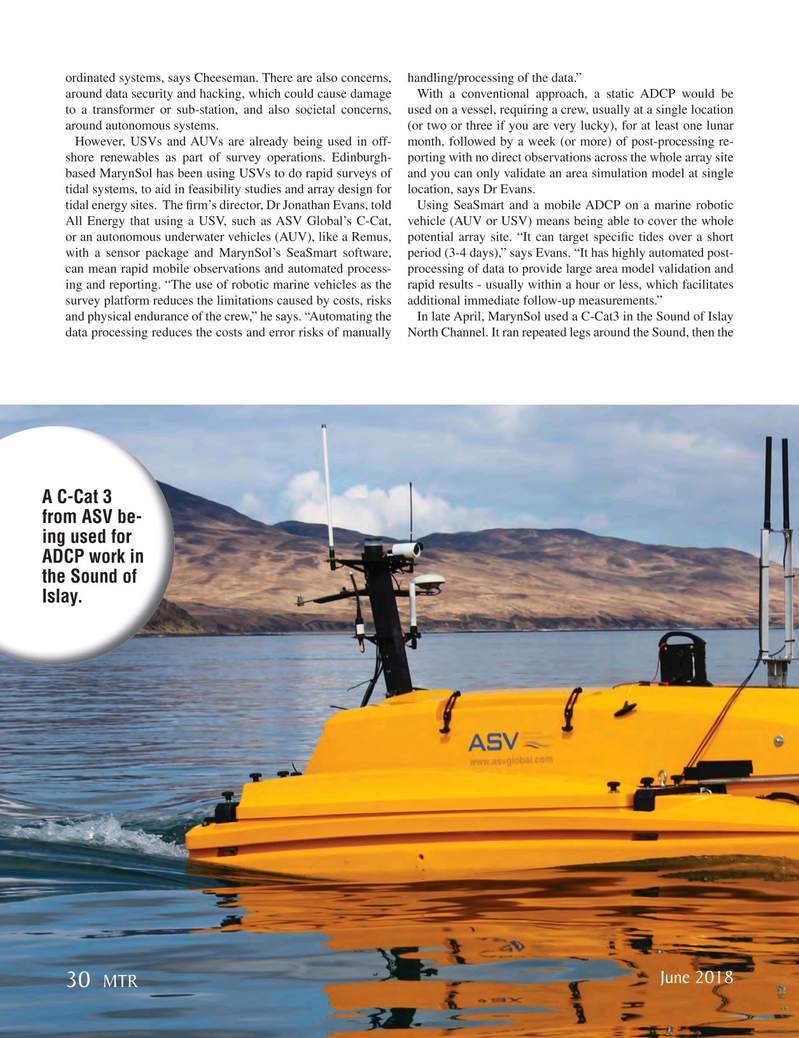
Page 30: of Marine Technology Magazine (June 2018)
Underwater Defense
Read this page in Pdf, Flash or Html5 edition of June 2018 Marine Technology Magazine
ordinated systems, says Cheeseman. There are also concerns, handling/processing of the data.” around data security and hacking, which could cause damage With a conventional approach, a static ADCP would be to a transformer or sub-station, and also societal concerns, used on a vessel, requiring a crew, usually at a single location around autonomous systems. (or two or three if you are very lucky), for at least one lunar
However, USVs and AUVs are already being used in off- month, followed by a week (or more) of post-processing re- shore renewables as part of survey operations. Edinburgh- porting with no direct observations across the whole array site based MarynSol has been using USVs to do rapid surveys of and you can only validate an area simulation model at single tidal systems, to aid in feasibility studies and array design for location, says Dr Evans.
tidal energy sites. The ? rm’s director, Dr Jonathan Evans, told Using SeaSmart and a mobile ADCP on a marine robotic
All Energy that using a USV, such as ASV Global’s C-Cat, vehicle (AUV or USV) means being able to cover the whole or an autonomous underwater vehicles (AUV), like a Remus, potential array site. “It can target speci? c tides over a short with a sensor package and MarynSol’s SeaSmart software, period (3-4 days),” says Evans. “It has highly automated post- can mean rapid mobile observations and automated process- processing of data to provide large area model validation and ing and reporting. “The use of robotic marine vehicles as the rapid results - usually within a hour or less, which facilitates survey platform reduces the limitations caused by costs, risks additional immediate follow-up measurements.” and physical endurance of the crew,” he says. “Automating the In late April, MarynSol used a C-Cat3 in the Sound of Islay data processing reduces the costs and error risks of manually North Channel. It ran repeated legs around the Sound, then the
A C-Cat 3 from ASV be- ing used for
ADCP work in the Sound of
Islay.
June 2018 30
MTR
MTR #5 (18-33).indd 30 MTR #5 (18-33).indd 30 5/29/2018 10:09:24 AM5/29/2018 10:09:24 AM

 29
29

 31
31
